Canada was found in 1500 and established as a country in 1867. Today, it has become one of the best places to live in. Canada is a land of vast distances and rich natural beauty. Economically and technologically, and in many other ways she closely resembles her neighbor to the south, the United States, although there are significant differences between the two countries. Canada is perfectly happy with its British heritage and many Canadians are proud of this. Canada has historically been built and influenced by immigrants from two European nations, Britain and France. This dual nature is very different than in the United States, and in some parts of Canada, particularly Quebec and parts of New Brunswick, Canadians primarily speak French.

Canada gives others an exact idea of what multiculturalism is; in one’s mind, multiculturalism is a theory that encourages others to accept different cultures other than only a mainstream culture. With that in mind, people feel comfortable immigrating to Canada and in return, they contribute to Canada’s growing economy. Do you know that Canada is famous for its Spotted Lake? The waters of this lake have high concentration of different minerals (magnesium sulfate, sodium & calcium soleplates). What makes this lake so special is the fact that in summer almost all the water evaporates and the minerals are left there. As a result, on the place, where the water used to be, huge spots appear. The color of every spot depends on the composition of the mineral. The panorama is making you admire the picturesque place with bated breath! Well, of course you know that Canada is internationally famous for the Niagara Falls! It is interesting to know that the Niagara Falls combines three other falls: Horseshoe Falls, American Falls and Bridal Vail Falls! It is well-known that Niagara Falls is the most voluminous waterfalls on the Niagara River. There is no single culture found in Canada. Instead there are many cultures each equally important and valued, all united to form this great country. Each separate culture is unique and defined although it is part of a whole. Values and ways of life are extracted from each culture and adopted by others, but each culture still remains distinct.
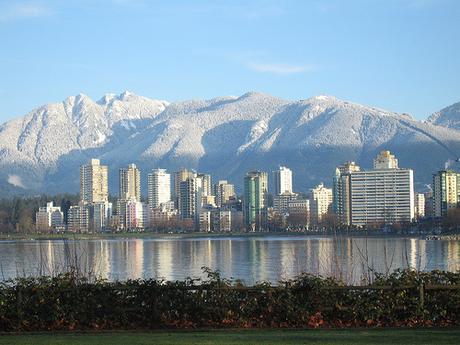
Canada was not always a multicultural country. Canada’s first culture was that of the Aboriginals who lived here for hundreds of years before the Europeans discovered Canada. This native culture was greatly influenced by the French Canadians, the first permanent European settlers. However, the greatest influence on Canadian culture came from Britain. British culture was the institutionalized in Canada for many years. British dominated nationality came to an end when other immigrants inhabited Canada and their cultures remained distinct, yet influenced and respected each other. Multiculturalism is an important part of Canada and is displayed to great extent. Most cities and towns hold festivals celebrating the individual cultures that make up Canada. Festivals such as these can be found here in Saskatoon, and excellent example would be Folk fest. Folk fest gives different cultures that make up Saskatoon a chance to display their customs such as dance and cuisine, and heritage.
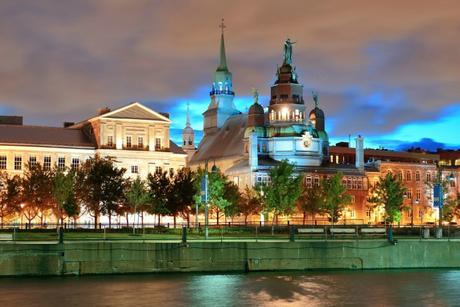
Each separate culture teaches its customs but is still a part of the entire festival. Cultural displays such as this give fellow Canadians a chance to learn about each other’s heritage. Canada is bounded on the north by the Arctic Ocean, on the west by the pacific Ocean, and on the east by the Atlantic Ocean and its associated bodies of water, including Baffin Bay and the Labrador Sea. Canada has an abundance of mineral, forest, and water-power resources. The mining industry has been a major force in Canada’s economic development in the past and is still the main force in the advance and economic activity and permanent settlement into the north-lands. The principal minerals are petroleum, nickel, copper, zinc, iron ore, natural gas, asbestos, molybdenum, sulfur, gold, and platinum; in addition extensive beds of coal, potash, uranium, gypsum, silver, and magnesium are found.
Entry in Canada:
Everyone from every country arriving in Canada by air, land and sea has needed a passport or equivalent travel document. Besides an up-to-date passport, visitors may instead have an equivalent travel document, such as a NEXUS Card. Visitors from any country other than the U.S. have always needed a passport to enter Canada. On the other hand, because of a friendly border crossing agreement between Canada and the United States, Canada Border Services did not require U.S. citizens to present a passport to enter Canada. This friendly border crossing agreement used to be mutual; however, now the WHTI requires that U.S. citizens have a passport to return home. In this way, passport requirements for Canada and U.S. borders are different on paper, but, are in practice, the same. Canada will not allow a U.S. citizen into the country who does not have the proper documentation to return home.
Pacific Rim National Park, B.C.
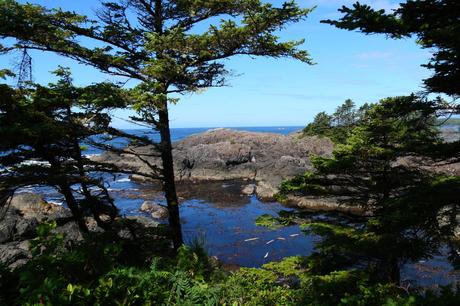
Pacific Rim National Park Reserve is known for its long sandy beaches & lush coastal temperate rainforests. Located in the heart of Pacific Rim National Park, the Wickaninnish Interpretive Centre is a great resource for information on the area’s rich history and culture – as well as the distinct ecological system of the park. Other nature and sightseeing activities in nearby Tofino and Ucluelet – such as whale watching, hot springs and nature tours – can be arranged through various local businesses. The thriving rainforest of Pacific Rim National Park offers several different habitats: Spruce Fringe is a result of the ocean’s salt spray; the Sitka Spruce can endure and survive despite the area’s salty water, wind and sand (and can be found at the edge of the coastline); smaller trees hug the ocean’s shoreline, while taller trees can be found in areas that are less exposed to the rough ocean waves and winds.
Banff National Park, Alberta

BANFF, ALBERTA – Banff National Park – Canada’s first national park – 1 1/2 hrs drive west of Calgary, Alberta, Canada. From Banff’s humble beginnings as a 26 square kilometer hot springs reserve, Banff National Park now consists of 6,641 square kilometers of unparalleled mountain scenery nestled in the heart of the magnificent Canadian Rockies. Each year, millions of visitors come to Banff to marvel at the emerald waters of Lake Louise, walk amongst the flower-filled heavens at Sunshine Meadows, and drive beneath the towering jagged peaks lining the Ice fields Parkway. Snow-capped peaks, glistening glaciers and sweeping vistas are just one part of the allure of Banff National Park. We also offer all the best summer and winter activities in the Canadian Rockies. A Kicking Horse white water rafting trip is truly one of Canada’s best adventures. Plus our golfing, hiking, bird-watching, mountain climbing, canoeing, skiing, fishing, and all types of guided tours are second to none.. Would you like to relax for a few days? We have the best hotels, accommodations, inns, and resorts. Banff is your vacation and adventure destination.
Niagara Falls, Ontario
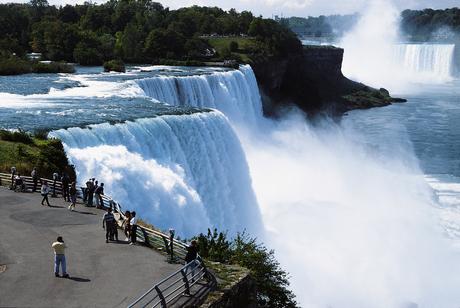
Niagara Falls is a Canadian city on the western bank of the Niagara River in the Golden Horseshoe region of Southern Ontario, with a population of 82,997 at the 2011 census. The municipality was incorporated on 12 June 1903. Experience the incredible power and beauty of Niagara Falls at Ontario’s Niagara Parks. Get as close as you can to the thundering water at Journey Behind the Falls and White Water Walk, then dine with a panoramic view at Elements on the Falls Restaurant. Explore the Butterfly Conservatory and the Botanical Gardens or play Whirlpool Golf course in the fabulous setting beside the Niagara Glen. Enjoy history, nature, gardens and so much more at Niagara Parks. The natural wonder, the Horseshoe Falls, is one of the world’s most famous waterfalls. With heights of 176 feet and a colossal 150,000 gallons of water crashing down per second, you are bound to be wonderstruck by the roar of the Falls, the mystery of the rising mist and if you’re lucky, the sight of rainbows overhead. The number one reason to visit Niagara Falls may be the Horseshoe Falls, but there is plenty more to see and do. According to Travel Analysts , Niagara Falls is Canada’s number one family holiday destination. Families make a beeline to the attractions of nearby Clifton Hill, the Niagara Parks and Marineland, explore along the Niagara River and splash down in indoor water-parks.
CN Tower, Toronto
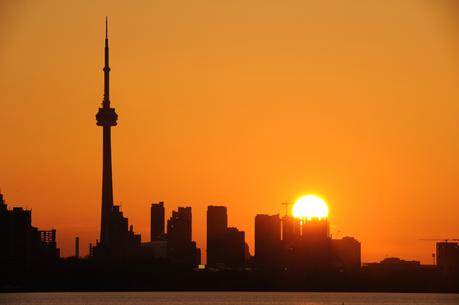
In 1995, the CN Tower was classified as one of the Seven Wonders of the Modern World by the American Society of Civil Engineers. The CN Tower shares this designation with the Itaipu Dam on the Brazil/Paraguay border, the Golden Gate Bridge in San Francisco, the Panama Canal, the Chunnel under the English Channel, the North Sea Protection Works off the European coast, and the Empire State Building. Since the Tower opened, Canadians and tourists from around the world have made the trip to Toronto to celebrate this marvel of civil engineering. Besides serving as a telecommunications hub, the Tower provides world-class entertainment and a wide range of unique attractions, exhibits and food and beverage venues. If you’re not afraid of heights, visiting the CN Tower is one of the greatest experiences you’ll enjoy in Toronto. Soar up to 342 m (1,122 feet) and you’ll arrive at the outdoor observation deck where, on a clear day, you’ll be treated to amazing views of the city. There’s also an “elephant-proof” glass floor located indoors where you can look straight down to the street level. It opened on June 26, 1994, and is the first such floor in the world. No one’s ever fallen through it and never will, but taking that first step onto the glass floor is, nonetheless, a little scary!
Old Port, Montreal
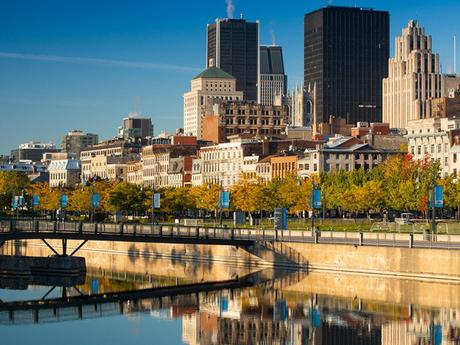
The Old Port of Montreal is the historic port of Montreal, Quebec, Canada. Located in Old Montreal, it stretches for over two kilometers along the St-Lawrence River in Old Montreal. The Old Port is the perfect place for dining, people watching, relaxing, shopping, and enjoying sunny days at the Clock Tower Beach. Paddleboats, quadricycles, and a guided historical tour help you see the city from a new perspective, while several cruises and excursions offer maritime activities, at full speed or nice and easy with a gourmet meal. The area is also home to the Montréal Science Centre and the IMAX (R) TELUS, where you can have fun learning more about the world. In winter, the area is enlivened by exciting events like TELUS Fire on Ice and Igloofest, as well as a large outdoor skating rink.
Quebec City, Quebec
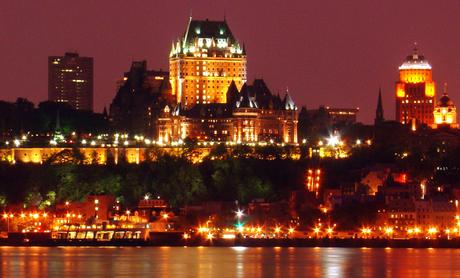
Quebec City, also known as Ville de Québec in French, is the capital city of Canada’s Quebec province. Its 2006 population of 491,142 makes it Quebec’s second most populous city (Montreal is the largest) and the tenth most populous city in Canada. The city is known for its location on the Saint Lawrence River as well as its historic Old Quebec which features fortified city walls. These walls are the only ones left in northern North America and as such, they were made a UNESCO World Heritage Site in 1985 under the name Historic District of Old Quebec.
Cabot Trail, Nova Scotia
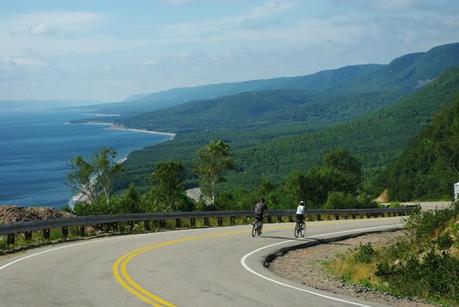
The Cabot Trail, a scenic roadway that takes you around the greater part of Nova Scotia Cape Breton, is one of the most famous drives in Canada. Many visitors to Cape Breton set aside an entire day – or two, three or four days – to see the sights along the Cabot Trail. Because there are so many scenic overlooks, cultural heritage sites, whale watching and hiking trails on the Cabot Trail, spending some time planning your excursion and accommodations will make your road trip much more enjoyable. The Cabot Trail is considered one of the World’s Most Scenic Destination Areas. The Cabot Trail is a 3-5 day experience. Enjoy our culture, our music and outdoor activities. Participate in our local festivals, our special Musical Events, the Ceilidh’s, kitchen parties that happen around the Cabot Trail regularly. Enjoy our fabulous seafood at many of the great restaurants. Cape Breton Island is easily accessible by land, air or sea. Once you’re here, you’ll see that this winding scenic trail has lots of things to do and see during each season. This winter you will enjoy snowmobiling on groomed trails, cross-country skiing on groomed trails at Nordic Centre in Cape North, downhill skiing at Ski Cape Smokey and snowshoeing. Many of the communities along the Cabot Trail feature outdoor rinks.
Bay of Fundy, Nova Scotia
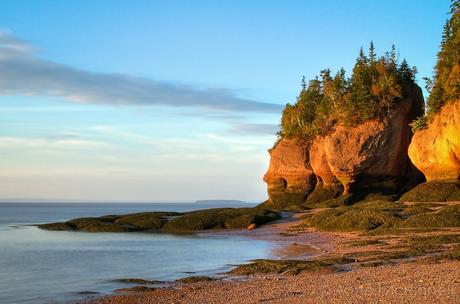
The Bay of Fundy is a bay on the Atlantic coast of North America, on the northeast end of the Gulf of Maine between the Canadian provinces of New Brunswick and Nova Scotia, with a small portion touching the U.S. state of Maine. Visit Atlantic Canada’s Bay of Fundy! Home to the highest tides in the world, the Bay of Fundy is a 270 km (170 mile) long ocean bay that stretches between the provinces of New Brunswick and Nova Scotia on Canada’s east coast. Each day 160 billion tones of seawater flows in and out of the Bay of Fundy during one tide cycle more than the combined flow of the world’s freshwater rivers! Experience the incredibly diverse Bay of Fundy in its National Parks, UNESCO sites, national historical sites, outstanding provincial parks, and provincial museums. Bay of Fundy is the world’s most dynamic tidal coastline, recognized nationally and internationally. There are breathtaking hiking trails and sea kayaking tours along sculpted coastline, cliffs and islands. At the mouth of the Bay, you will have an opportunity to see the rare northern right whale (plus 7 other kinds of whales) that congregate in the nutrient rich water. The highest tides in the world are found here within the Bay’s Minas Basin. 160 billion tones of water flows in and out of the Bay of Fundy every 12.5 hours. That’s enough to fill the entire Grand Canyon! It’s more than the combined flow of all the freshwater rivers in the world and at its peak the Fundy tide can reach as high as a 5-story building. As a result Nova Scotia’s Bay of Fundy is also the best site on the planet for “green” tidal energy. With extreme tides comes extreme adventure! The Shubenacadie River empties into the Bay of Fundy and is the only place on the globe where visitors can experience the exhilaration of tidal bore river rafting. Along with the highest tides in the world, the complexity of the Bay of Fundy’s marine ecology has been compared to that of the Amazon Rain forest.
Parliament Buildings, Ottawa
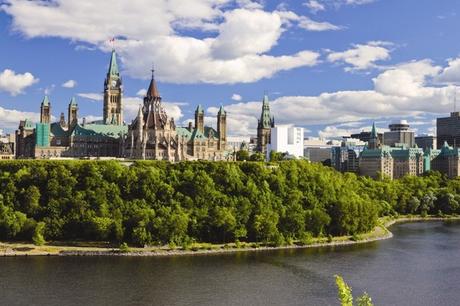
Parliament Hill, colloquially known as The Hill, is an area of Crown land on the southern banks of the Ottawa River in downtown Ottawa, Ontario. Discover the history, functions and art of Canada’s Parliament with a guided tour of Centre Block. This iconic building is home to the Senate, House of Commons and Library of Parliament. The centerpiece of Ottawa’s downtown landscape, Parliament Hill is the political and cultural heart of the city. The Parliament Buildings sit atop the Hill, the gorgeous Gothic-style structures overlooking the Ottawa River, as the politicians within debate the present and future issues of the country. Free guided tours are available daily, including a chance to head up to the Peace Tower for an incredible view of the city. During the year, the Hill is the focal point for a number of the biggest celebrations in the country: Canada Day (July 1) sees about a hundred thousand people descend upon the landmark for entertainment and a thrilling fireworks show, the summertime Sound and Light show is a nightly marvel, and Christmas Lights Across Canada illuminates the Hill like no other spot in the nation.
Facts about Parliament Buildings:
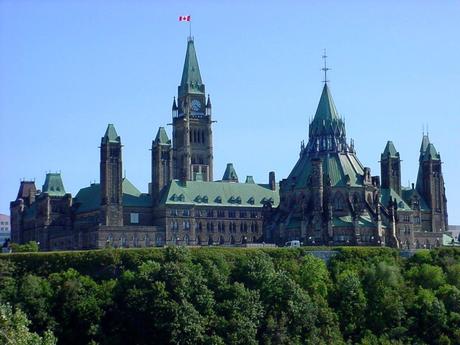
The Parliament Buildings are set on a dramatic hill overlooking the Ottawa River.
The original structure burned to the ground in a tragic fire in 1916 – except for the Library, which was saved by a quick-thinking employee who closed the Library’s massive steel doors.
Free guided tours are available daily, and are offered on a first-come, first-served basis. Schedule varies.
There are hundreds of individual gargoyles, grotesques, reliefs and bosses carved into the stonework of the buildings, including four looking out from high on each corner of the Peace Tower.
The 53-bell carillon in the Peace Tower marks each quarter hour; the Dominion Carilloneur performs daily free concerts.
* Information on the traditional uses and properties of herbs/ yoga/ places/ peoples are provided on this site is for educational use only, and is not intended as medical advice. All image credit goes to their Photographers.

